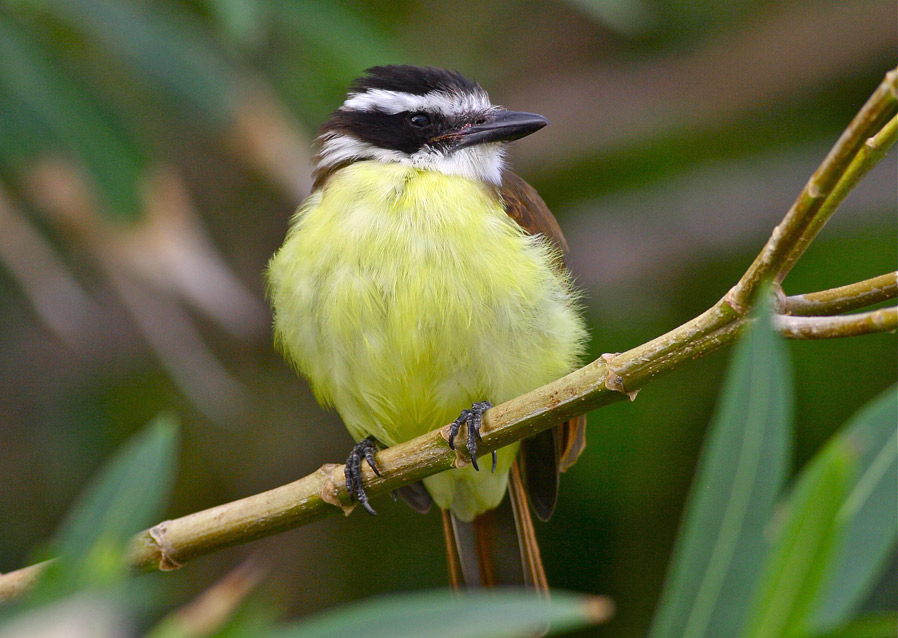A great kiskadee (Pitangus sulphuratus), hunts from a low branch by a beach in Bermuda in January. © BCP 2011
Arrgh! Looking out my window as I write this, Mr. Golden Sun has taken his rays away. It’s grey, grey, grey, and snowing. Again. Spring, which seemed just around the corner only a few days ago, now seems to be in abeyance. Which is why I have posted a picture of a beautiful bird I saw on recent travels to much sunnier, warmer climes. No golden sun? We’ll have a golden bird, instead. We need a boost here!
The gorgeous fellow above is a kiskadee flycatcher (Pitangus sulphuratus) I saw while in Bermuda in January. The large (nearly 9″ long) and lavishly yellow-breasted species is often referred to in North American bird guides as a great kiskadee. (Not to be confused with the lesser kiskadee, Pitangus lictor, which is mostly found in South America.) The kiskadees are tyrant flycatchers.
(For the taxonomy wonks, tyrant flycatchers are in the suborder Tyranni in the order Passeriformes, which include all birds that perch. Passeriformes derive their name from the Latin for sparrow, passer. In fact, the scientific name for house sparrows, possibly the best-known and most common perchers of all, is Passer domesticus.)
Passerines, which include more than half of all bird species, have several distinct traits that characterize the order. One is the arrangement of toes on their feet. In the photo above, you can clearly see the anatomy of a passerine foot: three toes directed forward, one toe directed back. The perfect adaptation for perching on any surface, even a completely vertical one.
Great kiskadees are native to the Americas, with a range extending north to Mexico and Texas, and south to Uruguay and Argentina, according to Wiki. Even though they are flycatchers, they eat much more than just flies. In fact, they are omnivorous, eating from a cafeteria of choices that includes large insects — such as beetles, wasps, grasshoppers, bees and moths — lizards, mice, baby birds, frogs, tadpoles, small fish, many berries, small fruits and some seeds. The big yellow birds were introduced to Bermuda in 1957 in the hope that would help control an overpopulation of lizards, but this experiment in biological control failed. The kiskadees did nothing to control the Anolis lizards, and have since become a problem themselves.
Here’s what the website Bermuda online has to say about these beautiful but bad boy birds: “Without knowing it beforehand, with the kiskadees Bermuda allowed in a veritable bird gang of terrorists. Those 200 original yellow-breasted kiskadees have become the prolific and noisy Mafioso of Bermuda’s bird lands, trees, shrubs and telephone wires – and a major threat to the lives, feeding and nesting habits of Bermuda’s beautiful bluebirds and other birds as well as to soft-skinned local fruit, crabs, fish and other choice edibles. Also, they were the major reason for the extinction of the endemic Cicada (known locally as Singers) by the late 1990s.”
A case of being beauty and the beast, all at once.
Pray for spring. In the meantime, see you on the trail.
© BCP 2011




1 comment